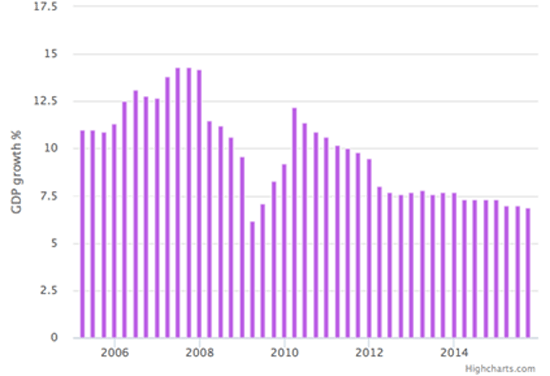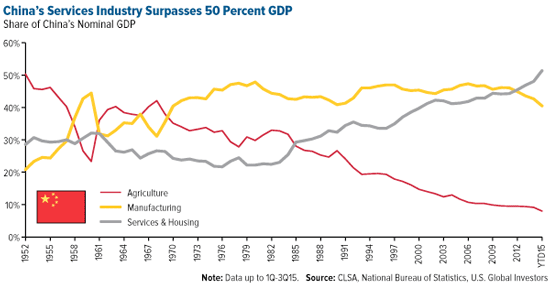Last week, I wrote about the massive pollution problems in China and the gigantic investment opportunity in the cleanup. However, China is a volatile, dangerous place to invest, and there is a wrong way and a right way to do so.
Where do you stand on the Chinese economic debate? Is the China economy decelerating so fast that it will pull the rest of the global economy down with it? Or do you think that the reports of China’s economic death are greatly exaggerated?
NOTE: I welcome your comments—GOOD and BAD—and encourage you to take advantage of the message forum at the end of these issues. Please!
No question, China is not growing at the breakneck pace that it has been.

China’s GDP growth slid to 6.9% in the third quarter, the slowest pace of growth since the depths of the 2009-09 Financial Crisis. That’s according to China’s National Bureau of Statistics, whose numbers are always highly massaged.
How massaged? That’s open for interpretation, but a recent Wall Street Journal survey of 64 economists found that 96% of them believe those GDP numbers don’t “accurately reflect the state of the Chinese economy.”

In other words, China’s economy is likely much weaker than the headlines suggest.
However, 6.9% (or slightly lower) is nothing to sneeze at, and China’s leaders are very committed to keeping the country’s economy on track.
“We propose to achieve the goal of creating a ‘moderately prosperous society’ by 2020, which requires annual economic growth of at least 6.5% over the next five years,” Chinese Premier Li Keqiang said.
The dangerous reality is that some parts of the Chinese economy are rapidly shrinking and are accidents waiting to happen.

In particular, I am talking about Chinese factories and Chinese exporters.
China is in the middle of a transformation from a manufacturing, export-based economy into a consumer-driven economy, like the US.
As with any major economic shift, there will be winners and losers.
The chart below from my friends at US Global Funds clearly shows where the growth is: the services industry.

By the way, US Global has a great China-focused mutual fund, the China Region Fund, and portfolio manager Frank Holmes is the best in the business.
The investment implications are simple: invest in Chinese manufacturing stocks and lose money, or invest in Chinese services stocks and make money.
However, the vast majority of investors I talk to have little or no money invested in China and the #1 excuse I hear is that it is too hard to invest in foreign stocks.
Hogwash!
There are 37 different ETFs focused on China and 310 Chinese stocks that are trading on the NYSE, Nasdaq, and OTC market.
That’s right; 310 Chinese stocks are traded here in the US. Click here for a full list of those 310 stocks.
Frankly, I think you’re much better off cherry picking the best individual stocks because all of the Chinese-focused ETFs heavily invest in the lethargic state-owned enterprises and the not-so-healthy manufacturing sector instead of the consumer-driven companies that are growing faster than Jack’s beanstalk.
And I’m not talking about a short-term one- or two-year trend, so make sure that you include a healthy dose of Chinese stocks in your portfolio.
If you haven’t yet, watch Mauldin Economics’ eye-opening documentary, China on the Edge, here.

Tony Sagami
30-year market expert Tony Sagami leads the Yield Shark and Rational Bear advisories at Mauldin Economics. To learn more about Yield Shark and how it helps you maximize dividend income, click here. To learn more about Rational Bear and how you can use it to benefit from falling stocks and sectors, click here.

